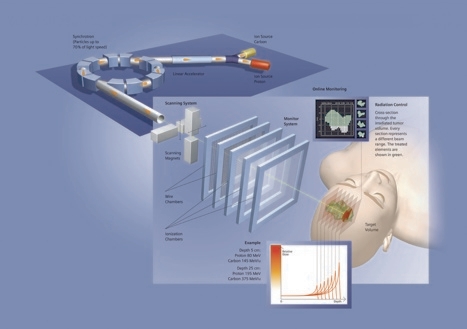Proton beam therapy comes of age
Particle accelerators that can blast tumours with pinpoint accuracy are entering the medical mainstream.
When five-year-old Alex Barnes was diagnosed with an aggressive brain tumour the conventional options were bleak: surgery, followed by radiotherapy, with a strong chance of serious brain damage.
Fortunately, there was another choice. Thanks to the generosity of friends and relatives, the parents of the Leicestershire child were able to afford to take him to the US to receive proton therapy: a highly targeted, particle physics-based treatment that has a number of compelling advantages over traditional non-invasive approaches. In September 2010, two years after his treatment, Alex was given the all-clear and doctors believe there is now little chance of the tumour returning.
Proton therapy is one of a suite of socalled particle-therapy treatments that use equipment more readily associated with large physics experiments to hurl highly energised atomic particles or ions at cancer cells with pinpoint accuracy.

Claimed to be more effective than radiotherapy and with fewer unpleasant side effects, particle therapy is increasingly seen as one of the most promising weapons in the fight against cancer.
Register now to continue reading
Thanks for visiting The Engineer. You’ve now reached your monthly limit of premium content. Register for free to unlock unlimited access to all of our premium content, as well as the latest technology news, industry opinion and special reports.
Benefits of registering
-
In-depth insights and coverage of key emerging trends
-
Unrestricted access to special reports throughout the year
-
Daily technology news delivered straight to your inbox










Water Sector Talent Exodus Could Cripple The Sector
Maybe if things are essential for the running of a country and we want to pay a fair price we should be running these utilities on a not for profit...